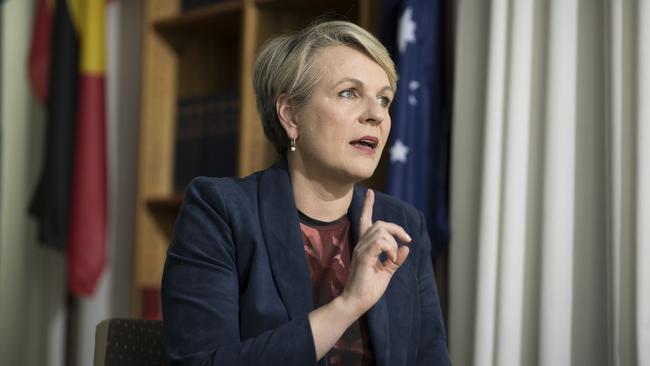Southern water wealth: Basin entitlement pool hits $30 billion
Murray-Darling Basin water entitlements values have soared to hit $30 billion — after the new Water Minister lashed the former government’s job on water.

The value of southern Murray-Darling Basin’s 7.7 million megalitres of water entitlements has tripled in five years to be worth more than $30 billion today, of which $7.8 billion is held by the environment.
The latest 2021-22 water market analysis by the Aither consultancy group shows the environment’s 1.9 million megalitres represent about 26 per cent of the entitlement pool.
The analysis undermines Federal Water Minister Tanya Plibersek’s claims on the Coalition’s poor performance on recovering water for the environment.
Ms Plibersek recently told Parliament “it’s those opposite (the Coalition) for almost a decade who have sabotaged the delivery of the Murray-Darling Basin Plan”.

Even the Commonwealth Environmental Water Holder’s own records show that during the Coalition Government’s eight years in power it oversaw the recovery of 801,000ML for the environment.
Aither’s report highlights:
THE long-term outlook for entitlement markets still appears positive, given commodity prices, for some irrigated agricultural industries are strong (e.g., cotton and rice).
HOWEVER questions are being raised about the extent to which entitlement prices can continue to increase given the current low yields, alongside increasing interest rates.
WHILE market participants are considering whether the Federal Government will recommence water entitlement buybacks, the major driver of high security and high reliability entitlement prices is likely to be the volume of uncovered permanent horticultural demand.
ACCESS to carryover space will remain an important part of many market participants’ water strategies. Given that carryover space in the lower Murray is so scarce, this demand will continue to influence prices for low reliability entitlements in the upstream zones.
2022-23 is likely to be a strong year for NSW general security entitlement values given high allocations and comparative value to high security and high reliability entitlements.
As for allocation trade, Aither points out that if the current wet outlook eventuates, then by peak irrigation season over summer, almost all entitlements will have been fully allocated.
“If this happens, and we get another wet summer, allocation prices could stay low,” Aither reports. “If we get a more typical summer, allocation prices could hold steady or increase
modestly from current levels, before decreasing towards the end of the year.”
Aither concludes:
DOWNSTREAM trade opportunities are likely to be few and far between. This means prices in the lower Murray will again be higher than the upstream zones.
WATER demand from annual croppers in the Murrumbidgee will be key. If it turns dry over summer, allocation prices could be pushed higher than in the lower Murray and we could possibly see back trade into the Murrumbidgee.
WITH full storages in the southern MDB, the outlook for 2023-24 looks positive.




